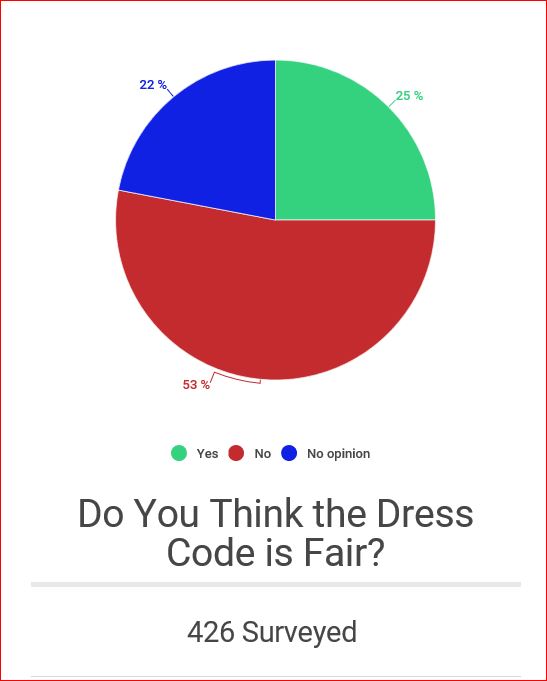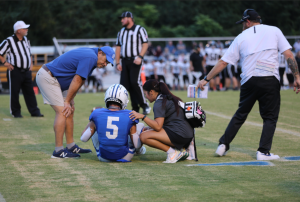Girls Dress to Distress
December 7, 2017
Many students are against the enforced dress code for the 2017-2018 school year, as it is proclaimed to be aimed against females and creates sexism in our school atmosphere. The dress code remains the same as last year; however, many girls have complained, saying that is more strict than ever.
“The administration spoke to the students during an assembly and directly targeted the girls in the school, saying that we need to ‘evaluate our bodies and determine if we are going to be a distraction,”’ said junior Rachel Maxwell. “Hearing these sexist comments from someone in a position of authority in the school was incredibly disheartening and disappointing.”
The current dress code includes: no dresses shorter than a note card length above the knee; a sweatshirt sleeve should not exceed the length of the index finger; leggings should be accompanied by a long shirt; no undergarments should be exposed; and a shirt shoulder strap should exceed a 3-inch width. Obviously, the dress code mainly points out problematic clothing articles for girls, and prohibits them. However, none of these rules in the student handbook direct anything to the males in our school.
Junior Alexis Coleman was dress coded in the first month of the new school year for wearing athletic shorts that the administration saw as too revealing.
“I’ve seen other girls who are shorter or a different size than me that wear athletic shorts and they don’t get dress coded, so it was unfair that the administration picked me out of all of the other people that wear them,” said Coleman.
When the rules of the dress code are broken, the dress code violator must change, not wear that specific article of clothing to school again, and receive a referral. However, if a student is unable to change because a parent cannot bring different clothes, the punishment extends to in-school-suspension.
“My parents couldn’t bring me clothes because they were at work, which is unfair to me and students with the same situation. It’s not my fault that I couldn’t have a change of clothes,” said Coleman.
Many schools nationwide proclaim that the reason behind a dress code is to prevent “distracting the boys in our school.” However, many boys in our school disagree with this, admitting that they have never actually been distracted by a girl’s shoulder or sweatshirt arm length.
“I have never actually been distracted [by what girls are wearing],” said sophomore Luke Jarrett. “I don’t think there is a problem with what most girls wear to school.”
The dress code can be perceived as unfair because if a boy does not see it as a distraction, then it is pointless to punish a girl for what they are wearing.
“I am not a distraction, and I deserve the same uninterrupted learning that every boy in the school is privileged enough to have because of their gender,” said Maxwell.
Girls are not problems to the school because of what they are wearing. Instead of teaching girls that they are responsible for the boys’ mental states, the administration should be teaching that everyone should respect a person no matter what size, shape, gender, or race they are, not for their sense of fashion.








